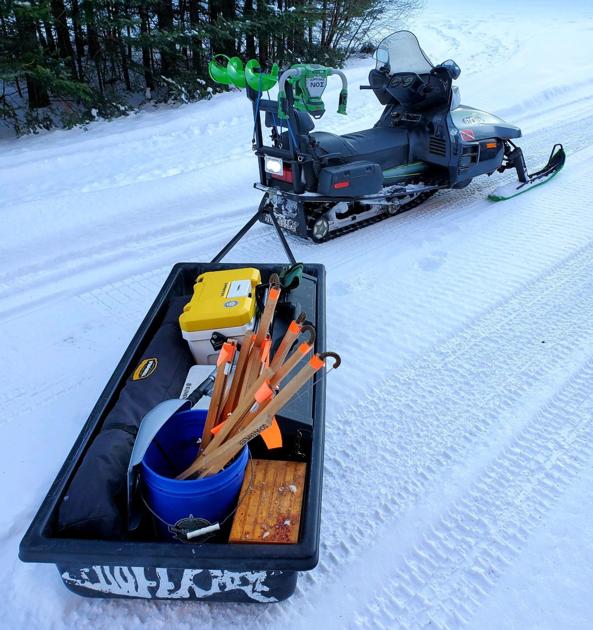AS IT RELATES to outdoor activities, there is a fine line between being properly equipped and having an absurd amount of gear. I would like to proclaim that I exist somewhere in the middle — a man who owns everything necessary with a significant quantity of the frivolous extras.
In order to complete the anticipated task of any outdoor sport, there exists a minimum level that, should one be equipped with any less, would make the mission impossible. You cannot go skiing without skis. No one can fly fish without flies or snowshoe without … well, you get it.
The delineation between the necessary and unnecessary can be made only after careful examination of the practicality of each item. There are many items that are not crucial to a specific goal but simply make it a whole lot easier. Likewise, some extra items create safer or more comfortable conditions for the participants.
To better illustrate my point, allow me to break down the equipment that I take on a typical ice fishing excursion. I will start with the short list of essentials and I will let the reader decide whether I’m over-equipped.
In order to explore the aquatic world beneath the ice, one must somehow breach the cold layer of frozen snow, water, and slush that separates them. An auger, powered by gas, propane, battery or elbow grease is the most practical tool in an ice angler’s arsenal. Without an auger or chisel, ice fishing can not happen.
A device that includes some type of line and hook must be employed to insure the connection between angler and fish. Tip-ups, traps or jigging rods are the most common and I always bring a significant supply of both. Either may be used with live or artificial bait and be employed in a variety of locations and depths.
If you can check off your list the small quantity of items that I just outlined, an ice fishing excursion is possible. However, there are many more items that might increase success, enjoyment and comfort.
A snowmobile can make a big difference between success and failure of an ice fishing day. Providing a faster means of getting to the water means more time fishing and less time walking. The ease with which equipment is transported and moved to explore new locations makes them a luxury that I cannot overstate. My snowmobile has helped me catch a lot of fish.
A portable bobhouse has become a regular feature in most of my trips and often means the difference between fishing for a long or short while. For those unfamiliar, they are basically a tent, easily set up and anchored to the ice. On a cold winter day, these structures provide enough cover to create comfortable conditions all day. Inside, gear is less likely to freeze up, which increases the likelihood of a successful catch. When I add a propane heater, I can comfortably fish without gloves and often remove a layer or two of outerwear.
A fish finder often gets a bad name as it might be seen as an unfair advantage. In reality, they display depth, temperature and structure — all of which must be evaluated when pursuing fish. Most will mark (indicate) a fish and the cat-and-mouse game can be very exciting even if it swims away uncaught.
The final tool in my inventory is not at all a necessity but I never fish without it. Affectionately named “the stink rag,” this small absorbent towel allows me to clean and dry my hands after handling the cold, wet, sometimes unpleasant items used in ice fishing. By the end of the day, it smells terrible and has correctly earned its name.
The stink rag is not an essential tool but adequately illustrates the benefits of a few “extras” when exploring the outdoors.
Credit: Source link































